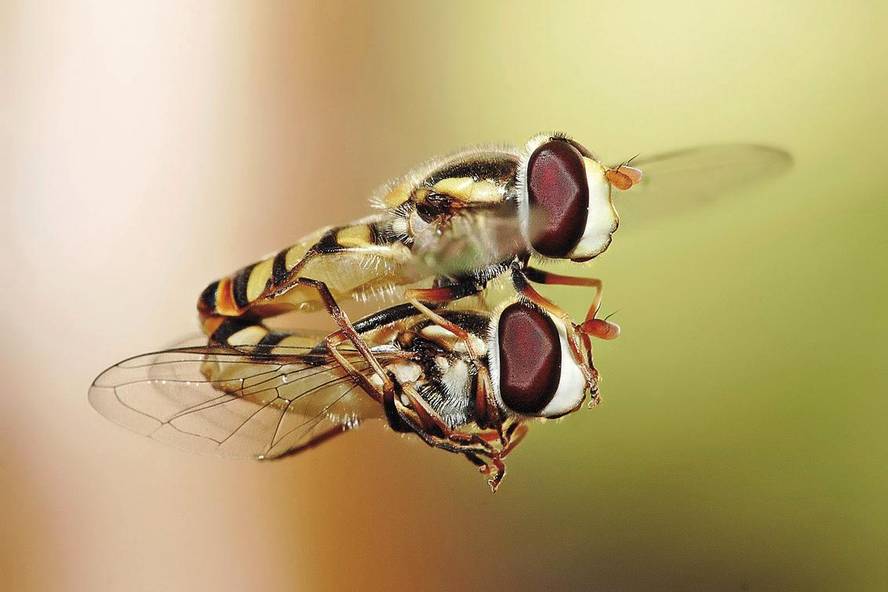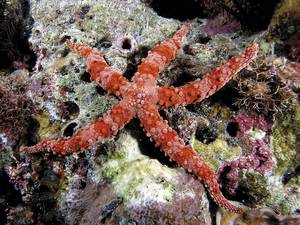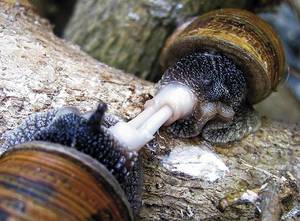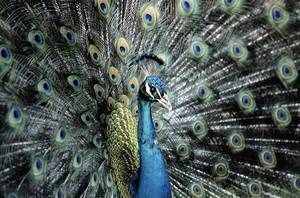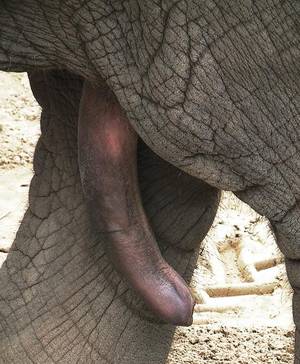Sex, for what?
Certainly, sex is very successful. This is confirmed by biologist Ibon Cancio: "Sexual reproduction can be a success, and so do numbers and math." Like most circular expressions, that also has but one: "But the ability to duplicate species with asexual reproduction is much greater," explains Cancio.
Environmentalist Arturo Elosegi has stated what Cancio said: "That's right. And there are also many forms of asexual reproduction and all are very effective. However, there are very few species that only reproduce asexually; sexual reproduction is much more widespread."
Therefore, but even with them, it is undeniable that sexual reproduction is more successful than asexual. Cancio provides a revealing fact: "The species that reproduce asexually are very high in the phylogenetic tree, which means that they are young species or, what is the same, that there are no species that reproduce asexually that last long. They expire immediately." However, he warns that there are exceptions: "For example, bdelloid rotifers. They are an evolutionary scandal."
The scandal was published in 1986 in an article in the journal Nature. The author of the article is biologist and genetic John Maynard Smith and the title of the article is representative: "Contemplating life without sex", that is, Looking at a life without sex.
Maynard Smith considered it scandalous that the bdelloid formed such a long and lasting family, without sex. Bear in mind that the family of these tiny aquatic beings is very numerous (more than 450 species) and have been on planet Earth for millions of years (about 200 million years). All this through asexual reproduction!
Subsequently, researchers have discovered that bdelloids have such scandalous behavior due to their particular physiology and genetics. In fact, when the conditions of the environment are inadequate, it proceeds to its drying. In this way they remain until the environment is favorable again and, incidentally, all their parasites die. But, in addition, they have a great ability to solve their genome and in that process they use it to renew and update it. Thanks to this they have managed to be so numerous and last so long.
However, bdelloids are an exception; biologists emphasize that sexual reproduction is the most common. In addition, Elosegi takes with caution this type of curiosities: "Maybe the Bdelloids also reproduce sexually once, without us having any trace of it. This occurs, for example, in fungi: species unknown to sexual reproduction are included in the group of fungi, which normally reproduce asexually, but from time to time one of them begins to proliferate sexually and we realize that it is a fungus of another group, for example, a basidiomycete. This can also happen with bdelloids. The truth is that we have not been able to catch that they are reproducing sexually, so the only thing we can say is that we know they have asexual reproduction."
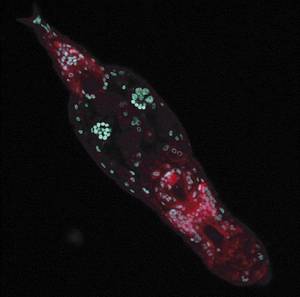
The advantage of sex
"What is clear is that sexual reproduction has something that gives it an advantage," explains Cancio. "Otherwise, from an evolutionary point of view, it cannot be understood. If evolution is survival of the fittest, that is, if it advances the stronger or lighter, how to explain the tail of the pauma? The tiger is easier to catch the pauma with long tail and, however, for him it is good to have long tail and evolution has bet for it. Why? Because the large and elegant tail allows him to reproduce sexually, thus transmitting half of his genome to his descendants."
According to biologists, there are two main hypotheses that explain the prevalence of sexual reproduction. One is called the trinkete of Muller and the other the theory or hypothesis of the Red Queen. According to the first, in asexual reproduction species, genomic mutations accumulate from generation to generation until mutations prevent life. Faced with this, descendants born through sexual reproduction receive the genes of both parents and in this transmission it is possible to lose the mutated genes.
Cancio compares his parents' genes with the playing cards: Somehow, in sexual reproduction, genes are mixed as cards are mixed, so in the next generation mutations are diluted.
The Red Queen hypothesis is based on fleeing parasites. Like the queen appearing in the book Alice across the mirror, individuals are forced to run to stay in the same place. If they do not run, the parasites trap and destroy it. "Individuals also inherit their mother's parasites. These parasites are perfectly adapted to the mother and therefore prepared to infect the individual. But thanks to sexual reproduction, that individual that is created is different from parents, and parasites cannot become infected," explains Elosegi.
According to Elosegi, it is widespread that sexual reproduction is sustained in multiple variants, "not to put all eggs in the same basket". This makes sense in species that have many descendants, but not in those that have few descendants like ours. "According to the theory of the Red Queen, the key is that the successor is different from the parents; although he is the only descendant, it is an advantage if he is different from the parents."
In any case, Elosegi has determined that being very different from the mother is also bad: "If the mother, as she is, is alive, it will be for something, so being very different is bad. But it is also harmful that it is very equal, since pathogens are adapted to that little."
Cancio believes that both hypotheses are compatible. "There is evidence for one and the other." For example, Cancio mentions that to demonstrate Muller's ratchet there have been numerous investigations with microorganisms, although Elosegi has stressed that in them sex is "different": "In bacteria sex is not paternal, to create offspring, but the union of the two bacteria, in which one gives the other a plasmid and another series of genes."
However, both in research with bacteria and species that alternate sexual and asexual reproduction, there is evidence favorable to the compaction of Muller.
And the same goes for the Red Queen hypothesis. One of the studies that demonstrate this was published in 2007 in the journal Nature. The article entitled "Host-paracsite "Red Queen" dynamics archived in ? sediment" describes the coevolution of the Daphnia water flea and its parasites. "Therefore," says Foreign Minister, "it is probably a game between the two, we do not know what percentage will influence one or the other, but both, Muller's trench and the Red Queen's race, will be affected."
Love is not odorless
Cancio leaves the water fleas and jumps to the human species: "We have about 30,000 genes. Of these, the genes of our main histocompatibility complexes are the most polymorphic, the most distinct from other individuals. It is these genes that encode antiparasitic weapons."
Moreover, those same genes are responsible for body odor. And many of the human genes, about 3,000, are olfactory receptors. That being said, Cancio continued with the explanation: "In fact, we don't seem to have a great olfactory power, but we have 3,000 genes for it, and what we smell is the main histocompatibility complex. Thus, through the smell we seek a couple with the largest complex of histocompatibility with ours to have children with him. Therefore, the children will have a mixture of both."
Elosegi summarizes in one sentence Cancio's explanation: "Love is blind, but not odorless." In this sense, they reminded the American company GenePartner. As explained on the company's website, they are based on the experiment conducted by researcher Claus Wedekind of the University of Bern.
In this experiment, several women smelled some t-shirts and then had to order them from the one that had the most attractive smell to the most amazing. These shirts were worn by several men for three consecutive days, so each shirt had the smell of the man who took them. Well, the results indicate that the smell of men with the largest histocompatibility complex with theirs was the most attractive for women.
Therefore, GenePartner analyzes the genes of the main histocompatibility complex of its customers and allows to create genetically different pairs. In the words of Gene Partner, "this way the foundations for a stable and pleasant relationship are laid." They also confirm that they will have healthy children.
Sex side effects
But sex also has its cons. One of them is the price to pay in return, according to Elosegi: "The evolutionary price is very expensive. Half of the young do not reproduce. At most they will get to cover and fertilize a female. But half of the young are male and the males have no breeding."

And the situation is even more complicated in species with more than two sexes. In fact, Cancio has mentioned fungi with thousands of different sexes ( Schizophyllum commune): "Normally two sexes are distinguished depending on the size and number of gametes they produce: those that produce many and small gametes are males and those that produce large and rare, females. However, these fungi have many variants, each of them is a sex."
Without going so far and despite having only two sexes, Elosegi explains that being specialized in creating large and isolated gametes and others in producing many and small gametes produces asymmetries: "Emea has invested much more than males in their gamete and not only in energy. In fact, the missed opportunities are also an investment, that is, the female, when fertilized, loses the possibility of germinating again for a long period of time, which does not occur in the male. So the interests of the male and female don't match."
On the other hand, although some mutations allow to lose, in reality, the risk of trisomies and other irregularities in meiosis is very high. "This is much more abundant in sexual reproduction than in asexual. That's a cost," said Elosegi.
"In addition, there is work to find a partner," adds Cancio. Both biologists remember what happened to the bear of the Pyrenees: all who were finally born were males, which caused the loss of population.
Yes, sex is expensive. But what would the world be like without sex? Elosegi gave a resounding answer: "It would be very boring. Look at the environment and the most striking structures and behaviors you see, the most curious and the most outstanding have to do with sex: the songs of birds, the colors of the lumens, the ass of the mandriles, the spectacular dances... Without sex, all that is over. The world would be very gray."



